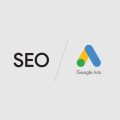When I help businesses grow their SEO, it’s common for people to ask me this question:
“So, what’s the difference between on-page and off-page SEO?”
Onwards to a quick blog that provides some examples of what has been done to my clients in Perth!
Seasons Bali are the latest clients who came to us in December 2023 for both a total overhaul of on-page and another altogether in off-page itself.
With this kind of traffic from search engines alone, they’re at 182% compared to the previous month! How did we manage that? Read on for more.
On-Page SEO: The Backbone of Your Success
In simple terms, on-page SEO is just like constructing a building; it is everything you need to shape inside your page. So here is how we apply this with real clients:
Technical Elements
For example, assisted one of our customers from Perth, Kid Speak: a speech therapy clinic. Australian English-friendly.
The result was: as stated by principal speech pathologist Bianca Chaney:
“The SEO campaign has been really effective. We have been full for a couple of months now.”
These were some of the key on-page elements picked up:
Content Structure
In a proven content strategy, you’ll find a carefully designed title structure, accurate meta descriptions, focused keyword positioning, plus a phone-friendly layout.
These make content both easy to read and search-engine optimised, available on all sorts of devices, especially mobile.
Technical Setup
The technical setup plays a crucial role in website performance, focusing on things like speed optimisation, XML sitemaps, and a strong internal linking structure
These aspects help search engines crawl and index the site efficiently while improving overall functionality.
User Experience
User experience is as important as anything else, with mobile responsiveness, clear navigation, and quick load times.
You want a site that can be easily accessed by everyone—for web users may have their refrigerators on at home to read this article.
A continuous experience will keep your visitors well and truly glued to the site for longer visits.
Off-Page SEO: Building External Authority
Off-page SEO is similar to your company’s reputation in the community—it defines how others perceive and engage with your brand online. Here’s how we did this with All Things Nice, an e-commerce company.
“We started from zero rankings, zero traffic, and grew very quickly just by being on page one, top positions for lots of our target keywords,” says Emma Higgins of All Things Nice.
Here’s what helped them succeed:
Authority Building
- Quality backlink acquisition
- Industry partnerships
- Online PR initiatives
- Community engagement
Social Signals
- Brand mentions
- Social media engagement
- Online community participation
- Industry forum presence
The On-Page and Off-Page Synergy
There is value in both approaches, as evidenced by our one success. Working with One Shade, a 360 strategy focused on both fronts was put into action.
Tom Broomhead, their Shade Sails Manager, went on record to say:
“The continuous support that we get has not just kept us encouraged and feeling that the original SEO marketing agreement signed with them has definitely been the key for us to get ahead of our competitors.”
Here’s how we achieved both:
On-Page Focus:
On-page attention consists of content quality enhancements, tech optimisations, site structure benefits, and user experience refinements.
These ingredients make sure the website is nicely organized, simple to browse, and optimized both for online search engines and site visitors.
Off-Page Activities:
Off-page refers to actions taken outside of your own website to impact your rankings within the search engine results page (SERP) and to build authority in your industry.
Such endeavors work to build credibility, raise awareness, and improve the site’s trustworthiness throughout the industry.
Measuring Success: The Numbers Tell the Story
Now that we have focused on explaining the work, let’s highlight actual results with some of our Dental O So Gentle campaign case studies.
As Daniella Posner writes:
“Since we started our work with Peter we have seen great results for our SEO ranking and our website. He’s straightforward, he’s fast, and he’s done things that nobody else has done.”
Key metrics we track:
On-Page Success Indicators:
On-page successes can be measured by page load times, bounce rates, time on site, and pages per session.
These metrics give a glimpse into user engagement, performance metrics of your site, and the overall effectiveness of your content.
A well-optimised and user-friendly website should have faster load times and lower bounce rates, as well as more time on site and pages per session, which means that visitors find the content valuable and engaging.
Off-Page Success Markers:
Off-page success markers have to do with growth in domain authority, referring domains, brand mentions, and social signals.
It is a great sign of credibility and trust if you see an increase in domain authority and if high-quality referring domains are linked to you.
Increasing mentions of your brand, along with social signals like shares and interactions, show the increasing influence of the site and its presence on digital platforms.
Common Mistakes to Avoid
Through working with numerous businesses like Landscapes WA, I’ve observed common pitfalls in both areas:
On-Page Mistakes:
On-page errors can range from poor mobile optimization and slow loading speeds to duplicate content and weak internal linking.
These problems can lead to poor user experience, lower search engine rankings, and decreased overall site performance.
Off-Page Mistakes:
Off-page errors relate to poor backlinks, neglected reviews, inconsistent citations, or no social presence.
Such factors can undermine a website’s credibility, visibility, and even authority-building capability within its niche.
The Implementation Timeline
Nic Russell, Director at Landscapes WA:
“The website you and the team designed, built, and optimised is brilliant for our business. We get so much work from it.”
A typical timeline for seeing results is as follows:
On-Page Changes:
- Technical fixes: 1-2 weeks
- Content optimisation: 2-4 weeks
- Initial results: 4-8 weeks
Off-Page Activities:
- Authority building: 3-6 months
- Relationship development: Ongoing
- Reputation growth: 6-12 months
Industry-Specific Considerations
Working with Harrison’s Landscaping for over 10 years has taught me that different industries need different approaches. As Josh Harrison notes: “I’ve always been really happy with the results. You’re in safe hands.”
Service Industries:
- On-Page: Service pages, location-specific content
- Off-Page: Local citations, customer reviews
E-commerce:
- On-Page: Product descriptions, category structure
- Off-Page: Product reviews, marketplace presence
Future-Proofing Your SEO Strategy
Paul Summers from Summers Legal experienced our comprehensive approach firsthand:
“Very professional approach and delivered top notch results within the estimated time.”
To maintain long-term success:
On-Page Maintenance:
- Regular content updates
- Technical audits
- User experience monitoring
- Performance optimisation
Off-Page Growth:
- Relationship building
- Authority development
- Brand reputation management
- Community engagement
Making the Right Choice for Your Business
As Paul Cook from iCOAT WA observed:
“I have seen a marked improvement with my SEO.”
The key is finding the right balance between on-page and off-page efforts for your specific situation.
Consider these factors:
- Current website status
- Competition level
- Industry requirements
- Available resources
Final Thoughts
On-page SEO and off-page SEO are both important for your success on the internet. As Wayne Ford from 4D Projects says: “Thanks, Pete, you’ve been a massive help with 4D Projects over the years!”
However, there is no trade-off or “choice” between on-page and off-page; both are actually complementary strategies implemented in your SEO. Would you like to know more about how this relates to your company? We can discuss your specific requirements.









